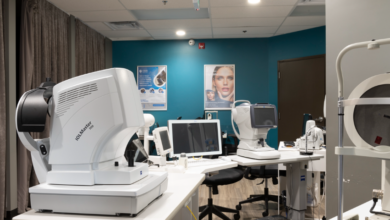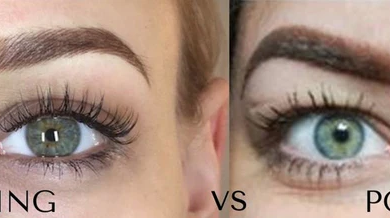Smile Maintenance Tips for a Radiant Look

Your smile creates a lasting impression, and maintaining it takes more than just brushing. This guide shares practical tips on techniques, lifestyle habits, and dental products to keep your teeth and gums healthy and radiant.
Brushing Techniques: Proper Methods for a Thorough Clean
The foundation of excellent oral hygiene starts with how you brush your teeth. Many people brush too aggressively or miss critical areas, leading to inadequate plaque removal and potential enamel damage.
Use the modified Bass technique for optimal results. Hold your toothbrush at a 45-degree angle toward your gum line, making small circular motions rather than aggressive back-and-forth scrubbing. This method effectively removes plaque while being gentle on your gums and enamel.
Timing matters just as much as technique. Brush for at least two minutes, dedicating about 30 seconds to each quadrant of your mouth. Many people underestimate how long two minutes feels—consider using a timer or electric toothbrush with a built-in timer to ensure you’re brushing long enough.
Replace your toothbrush every three to four months, or sooner if the bristles become frayed. Worn bristles lose their effectiveness and can harbor bacteria that contribute to oral health problems.
Choosing the Right Toothpaste: Ingredients to Look For
Not all toothpastes are created equal. The right toothpaste can significantly enhance your oral health routine, while the wrong choice might miss opportunities for improvement.
Fluoride remains the gold standard for cavity prevention. Look for toothpastes containing sodium fluoride or stannous fluoride, both of which have been proven effective in remineralizing tooth enamel and preventing decay. The American Dental Association recommends using fluoride toothpaste for optimal protection.
For those with sensitive teeth, consider toothpastes containing potassium nitrate or arginine. These ingredients help block pain signals from reaching the tooth’s nerve, providing relief from sensitivity while still offering cavity protection.
If you’re concerned about tartar buildup, seek toothpastes with pyrophosphates or zinc compounds. These ingredients help prevent tartar formation, though they cannot remove existing tartar—that requires professional dental cleaning.
Whitening toothpastes can be beneficial but choose carefully. Look for products with gentle abrasives like hydrated silica rather than harsh compounds that might damage enamel over time.
See also: A Lasting Solution for Healthier Living Spaces
The Role of Flossing: Techniques and Benefits
Flossing removes plaque and food particles from areas your toothbrush cannot reach—approximately 40% of your tooth surfaces. Despite its importance, many people skip this crucial step or perform it incorrectly.
Use about 18 inches of floss, winding most of it around your middle fingers and leaving about two inches to work with. Gently guide the floss between your teeth using a rubbing motion, never snap it into place, which can damage your gums.
When the floss reaches your gum line, curve it into a C-shape against one tooth and gently slide it into the space between your gum and tooth. Hold the floss tightly and scrape the side of the tooth, moving away from the gum.
Water flossers offer an excellent alternative for those who struggle with traditional floss. These devices use pressurized water to remove plaque and debris, making them particularly beneficial for people with braces, dental work, or dexterity issues.
The timing of flossing matters less than consistency. Whether you floss before or after brushing, the key is doing it daily. Some dentists prefer flossing before brushing because it loosens debris that brushing can then wash away.
Mouthwash Benefits: Selecting the Right One
Mouthwash serves as a valuable complement to brushing and flossing, but choosing the right type makes a significant difference in its effectiveness.
Therapeutic mouthwashes contain active ingredients that address specific oral health concerns. Antimicrobial mouthwashes reduce bacteria and plaque, while fluoride rinses provide additional cavity protection. Some formulations combine multiple benefits in one product.
For those with dry mouth, alcohol-free mouthwashes prevent further moisture loss while still providing antibacterial benefits. Alcohol-based mouthwashes can be effective but may cause irritation for some users.
Timing your mouthwash use properly maximizes its benefits. Use it at a different time than brushing with fluoride toothpaste to avoid washing away the protective fluoride coating. Many dentists recommend using mouthwash after meals or as a midday refresh.
Diet and Smile Health: Foods to Avoid and Embrace
Your dietary choices directly impact your oral health. Understanding which foods support healthy teeth and which ones pose risks helps you make informed decisions about your meals and snacks.
Limit sugary and acidic foods that feed harmful bacteria and erode tooth enamel. Soft drinks, sports drinks, and fruit juices are particularly problematic because they bathe your teeth in acid. When you do consume acidic beverages, use a straw to minimize contact with your teeth.
Sticky candies and dried fruits cling to teeth, providing a prolonged sugar source for bacteria. If you indulge in these treats, rinse your mouth with water afterward and wait at least an hour before brushing to avoid brushing away softened enamel.
Embrace foods that naturally support oral health. Dairy products provide calcium and phosphates that help remineralize teeth. Crunchy fruits and vegetables like apples and carrots stimulate saliva production, which naturally cleanses your mouth.
Green tea contains compounds that inhibit bacterial growth and reduce inflammation. Nuts provide protein and minerals that support tooth structure, while their texture helps scrub away plaque.
Regular Dental Check-ups: Why They Are Crucial
Professional dental care catches problems early when they’re easier and less expensive to treat. Even with excellent home care, professional cleanings remove tartar that regular brushing and flossing cannot eliminate.
Schedule dental visits every six months, or more frequently if recommended by your dentist. During these visits, your dental hygienist will remove plaque and tartar buildup, while your dentist examines your teeth and gums for signs of decay, disease, or other problems.
Professional cleanings also include screening for oral cancer, a serious condition that’s highly treatable when caught early. Your dentist can spot changes in your oral tissues that you might miss during daily care.
Dental X-rays reveal problems not visible during visual examination, such as decay between teeth, bone loss, or impacted teeth. The frequency of X-rays depends on your individual risk factors and oral health status.
Lifestyle Choices: How Smoking and Alcohol Affect Your Smile
Tobacco use dramatically increases your risk of gum disease, tooth loss, and oral cancer. Smoking reduces blood flow to your gums, impairs healing, and provides an environment where harmful bacteria thrive. The tar and nicotine in tobacco also cause unsightly staining that’s difficult to remove.
Excessive alcohol consumption dries out your mouth, reducing saliva production that naturally cleanses your teeth and neutralizes acids. Chronic dry mouth increases your risk of decay and gum disease.
Both smoking and heavy drinking are major risk factors for oral cancer. Combining these habits multiplies the risk significantly. The good news is that quitting tobacco and moderating alcohol consumption can dramatically improve your oral health relatively quickly.
If you’re struggling to quit tobacco or control alcohol consumption, speak with your healthcare providers about support resources and cessation programs.
Cosmetic Dentistry Options: Enhancements and Considerations
Modern cosmetic dentistry offers numerous options for enhancing your smile’s appearance. From simple procedures to comprehensive makeovers, these treatments can address various aesthetic concerns.
Professional teeth whitening provides dramatic results safely and effectively. In-office treatments deliver immediate results, while take-home systems offer more gradual whitening. Professional treatments like teeth whitening, like those offered in Ellenton, FL, provide superior results compared to over-the-counter options.
Veneers can transform severely stained, chipped, or misaligned teeth. These thin shells of porcelain or composite material are bonded to your teeth’s front surfaces, creating a uniform, attractive appearance.
For more comprehensive changes, orthodontic treatments can straighten teeth and improve your bite. Modern options like clear aligners offer discreet treatment for many alignment issues.
Always consult with a qualified cosmetic dentist to understand your options and make informed decisions about treatments that align with your goals and budget.
Conclusion
Maintaining a radiant smile requires consistent daily care, smart lifestyle choices, and regular dental visits. Simple habits like proper brushing, flossing, and healthy eating can make a big impact over time. Start small, build good routines, and work with your dentist to keep your smile healthy and beautiful for years to come.




